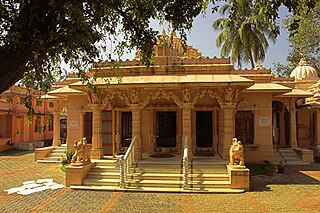
The Kingdom of Travancore (Thiruvithamkoor) was an Indian kingdom from 1500 until 1949. It was ruled by the Travancore Royal Family from Padmanabhapuram, and later Thiruvananthapuram. At its zenith, the kingdom covered most of modern-day central and southern Kerala with the Thachudaya Kaimal's enclave of Irinjalakuda Koodalmanikkam temple in the neighbouring Kingdom of Cochin, as well as the district of Kanyakumari, now in the Indian state of Tamil Nadu. The official flag of the state was red with a dextrally-coiled silver conch shell at its center. In the early 19th century, the kingdom became a princely state of the British Empire. The Travancore Government took many progressive steps on the socio-economic front and during the reign of Maharajah Sri Chithira Thirunal Balarama Varma, Travancore became the second most prosperous princely state in British India, with reputed achievements in education, political administration, public work and social reforms.

Rama Varma Kunhjippilla Thampuran (1751–1805), or Rama Varma IX, popularly known as Sakthan Thampuran, was the ruler of the Kingdom of Cochin. He was the King of the present-day southern Indian city of Kochi and his palace was in Thrissur City. The city of Thrissur is referred to as the Cultural Capital of Kerala owing to its many traditional festivals and historic temples. Sakthan Thampuran is considered the architect of the city of Thrissur. The festival Thrissur Pooram is considered to have been first started by him.

Kochi is a small city located in the Ernakulam District in the Indian state of Kerala. Trivandrum which is the capital and largest city of Kerala is 200km away from Kochi.

Sree Kerala Varma College is situated in Kanattukara, Trichur City of Kerala State, India. It was founded on 11 August 1947 by Rama Varma XV, the Maharaja of erstwhile Kingdom of Cochin.

Dharma RajaKarthika Thirunal Rama Varma was the Maharajah of Travancore from 1758 until his death in 1798. He succeeded his uncle Marthanda Varma, who is credited with the title of "maker of modern Travancore". During his reign Dharma Raja not only retained all the territories his predecessor had gained but administered the kingdom with success. He was addressed as Dharma Raja on account of his strict adherence to Dharma Sastra, the principles of justice by providing asylum to thousands of Hindus and Christians fleeing Malabar during the religious and military onslaught of Tipu Sultan.
Maharaja Gangadahra Koviladhikarikal Sri Ravi Varma (1865–1946) was the Maharaja of Cochin, India in 1943–46.
Rajah Rama Varma was the ruler of the Indian kingdom of Venad, later known as Travancore, in the modern day state of Kerala, India between 1724 and 1729, having succeeded his brother Unni Kerala Varma. He is better known as the uncle of Maharajah Padmanabha Dasa Vanchi Pala Marthanda Varma Kulasekhara Perumal, the "maker of modern Travancore". He was born as the second son of Rajah Ittamar of Thattari Kovilakam into the Royal Family of Kolathunadu. His entire family, including himself, two sisters and his elder brother Unni Kerala Varma, were adopted into the Venad house as members of the Travancore Royal Family by Rajah Ravi Varma, nephew of Umayamma Rani due to their failure of heirs there. Of his sisters, one died soon after her adoption while the other was the mother of the Maharajah Marthanda Varma.

The Travancore Royal Family was the ruling house of the Kingdom of Travancore. They lost their ruling rights in 1949 when Travancore merged with the Indian Union and their privileges were abolished by the Indian Union in 1971 by a constitutional amendment. Travancore and Kolathiri families are said to be those surviving among the original royal Nair Family's lineages, and are both descendants of the Ay/Venad Family, Cheras, Pandyas and Cholas. The ruler in that bloodline was Maharaja Sree Moolam Thirunal, as the family of Maharaja Chithira Thirunal and successors.

Sir Sri Rama Varma XV (1852–1932), known as The Rajarshi Of Cochin and as Abdicated Highness, was the ruler of the Kingdom of Cochin from 1895 to 1914.

Kodungallur Kovilakam, refers to palace of royal family of the late medieval Kingdom of Kodungallur (Cranganore), in the modern-day Kerala state, India. Kodungallur was a feudal principality subordinate to the rulers of the Kingdom of Cochin since the later half of the eighteenth century until the time of Indian independence. Kingdom of Kodungallur was under the protection of the Dutch after 1707 for a few years before returning to its allegiance to the Zamorin. Kodungallur Royal Family had two branches at Chirakkal Kovilakam and at Puthen Kovilakam.
Rama Varma VIII was an Indian monarch who ruled the Kingdom of Cochin from 1775 until his death in 1790.
Rama Varma XIII was an Indian monarch who ruled the Kingdom of Cochin from 1844 to 1851.
Kerala Varma IV was an Indian monarch who ruled the Kingdom of Cochin from 1851 to 1853. He is posthumously known as Kaashiyil Theepetta Maharaja.
Sir Kerala Varma VKCIE (1846–1895) was the ruler of the Kingdom of Cochin from 1888 to 1895.

Rama Varma XVIIGCIE was the ruler of the Kingdom of Cochin from 25 March 1932 to 23 May 1941.
Kerala Varma VIGCIE was the ruler of the Kingdom of Cochin from 23 May 1941 to 23 October 1943.












